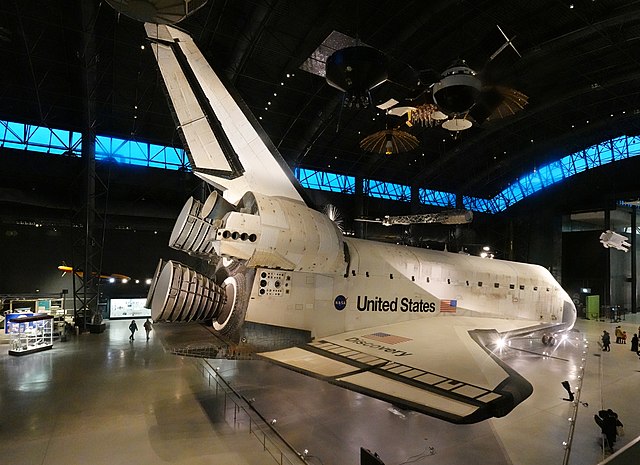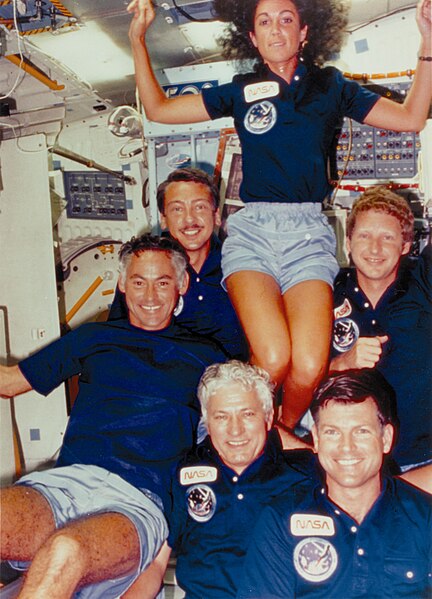STS-29 was the 28th NASA Space Shuttle mission, during which Space Shuttle Discovery inserted a Tracking and Data Relay Satellite (TDRS) into Earth orbit. It was the third shuttle mission following the Challenger disaster in 1986, and launched from Kennedy Space Center, Florida, on March 13, 1989. STS-29R was the eighth flight of Discovery and the 28th Space Shuttle mission overall; its planned predecessor, STS-28, was delayed until August 1989.
TDRS-D being deployed on Flight Day 1 of the mission.
Back row: James P. Bagian, Robert C. Springer, James Buchli Front row: John E. Blaha and Michael CoatsSpace Shuttle program← STS-27STS-30 (29) →
TDRS-4 after deployment
Liftoff of STS-29
Space Shuttle Discovery is a retired American spacecraft. The spaceplane was one of the orbiters from NASA's Space Shuttle program and the third of five fully operational orbiters to be built. Its first mission, STS-41-D, flew from August 30 to September 5, 1984. Over 27 years of service it launched and landed 39 times, aggregating more spaceflights than any other spacecraft to date. The Space Shuttle launch vehicle had three main components: the Space Shuttle orbiter, a single-use central fuel tank, and two reusable solid rocket boosters. Nearly 25,000 heat-resistant tiles cover the orbiter to protect it from high temperatures on re-entry.
Discovery in orbit in 2011, during STS-133, the orbiter's final flight
Space Shuttle Discovery at the Steven F. Udvar-Hazy Center
Discovery rollout ceremony in October 1983
On the maiden voyage of Discovery: Judith Resnik, Henry Hartsfield, Michael L. Coats, Steven A. Hawley, Charles D. Walker, and Richard M. Mullane








